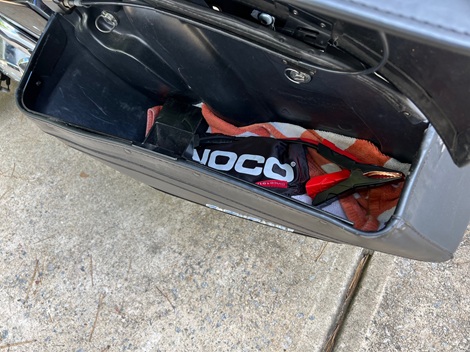2005 Harley Road King Review by Owner
Article by Mark Trotta
If you had to describe the ride in just one word, it would be "comfortable".
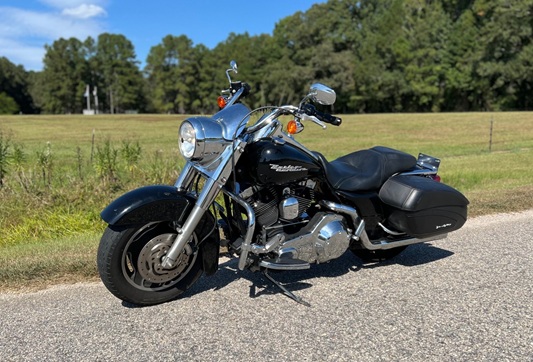
The comfort starts with a long 63.5" wheelbase, fat tires, and large V-Twin engine. Add a firm, wide seat with lower back support, neutral handlebars, and foot boards that allow several resting positions, and you're ready for hours of relaxed, non-stop riding!
Old Man's Bike ?
My first Road King was a 1997 model, which I bought second-hand in 2004. At the time, I was in my forties, and regarded it as an old man's bike.
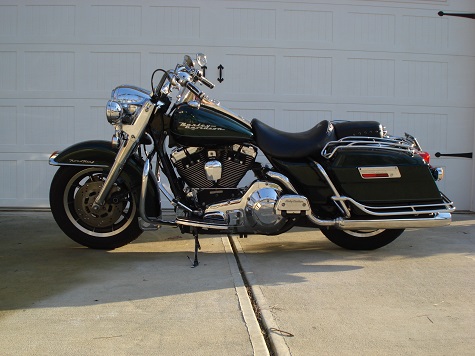
After five riding seasons, I sold it and went back to sport bikes. First was a 1974 Triumph Trident, followed by a 1976 Sportster, then a BMW R1100R, and finally my 1974 Norton Commando.
It's been 20 years since the Evo Road King.
I'm now in my sixties, and ready for a cruiser.
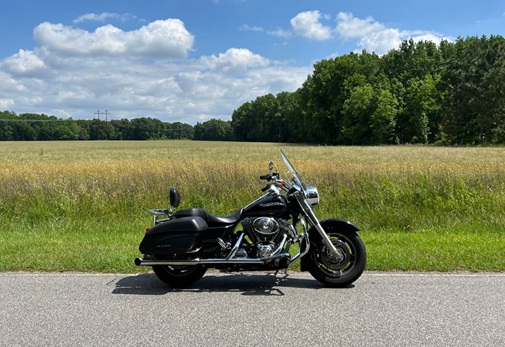
So, yeah, it's an old man's bike, what of it ?
*******************
The Road King is by far the most classic of Harley's line of motorcycles, a rolling tribute to Panheads of the fifties and sixties.
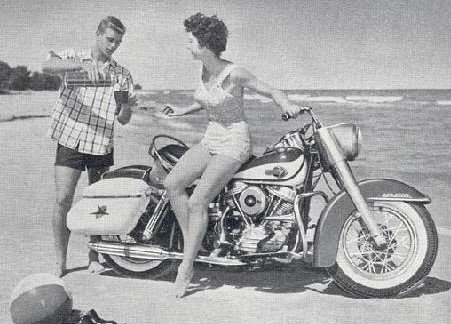
Pictured: 1960 Harley Duo-Glide
*******************
For the 2005 model year, there were four versions; the basic Road King (FLHR), Classic (FLHRC), Custom (FLHRS), and Police (FLHP).
A carburetor was standard equipment, fuel injection was optional.
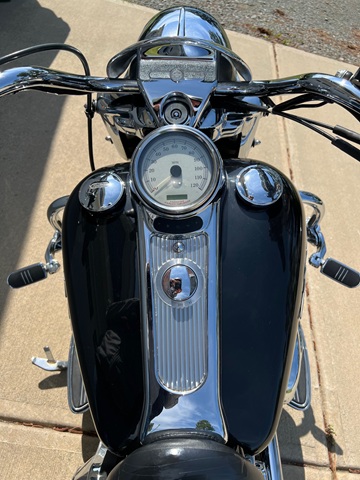
Because of the absence of fairing, radio, and tour pack, some will call it a minimalist bagger.
Harleys Are Never Stock For Long
The original owner of this 2005 FLHRS/I did not like the factory beach bars, and replaced them with conventional bars.
He also swapped out the factory wheels for a pair of Street Glide wheels.
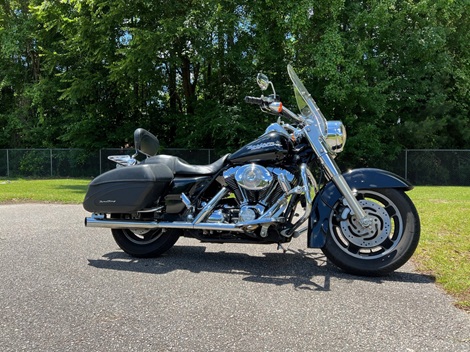
Add-ons include detachable windshield, back rest, and luggage rack, engine guards with highway pegs, and a few tasteful bits of chrome. It still has the stock seat, but I've been thinking of upgrading to a Saddlemen Roadsofa.
Hard Bags vs Soft Bags
Personally, I like the look and function of hard bags (like on my '97), but soft bags were standard equipment on the Custom, and they serve their intended purpose.
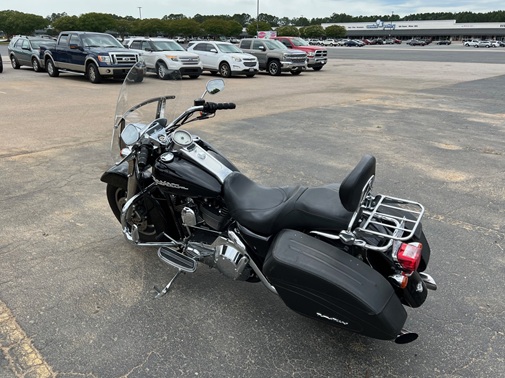
The Road King Custom (FLHRS) was introduced in 2004 and offered until 2007.
*******************
Twin-Cam 88 Specs
First-Generation Twin Cam engines, produced from 1999 to 2006, have a displacement of 1450cc (88 cubic inches). For those that need more cubes, big-bore kits can increase displacement to 98ci.
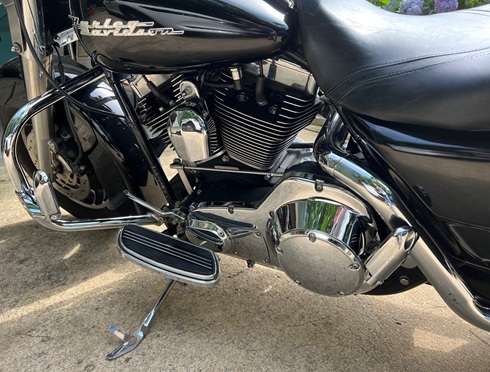
This bike is fuel injected, like my Evo Road King was, but this version is called Electronic Sequential Port Fuel Injection (ESPFI) and features some minor improvements.
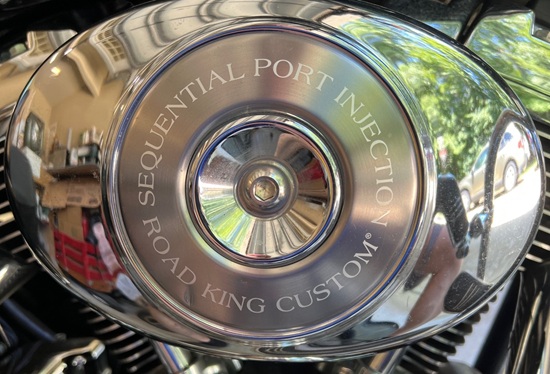
Always easy to start, no hesitation, power at all RPM's.
Engine compression ratio is 8.9:1 and premium gas is not necessary. I fill up exclusively with 90 octane Non-Ethanol.
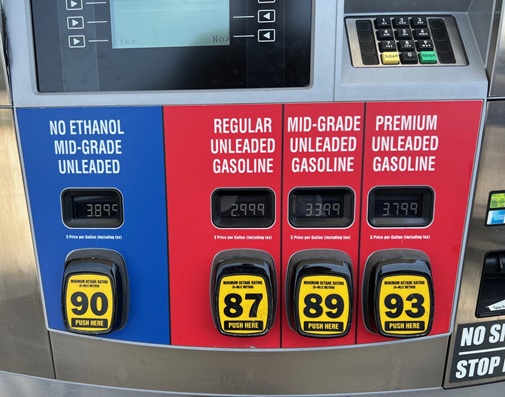
Here in central North Carolina, you can find Non-Ethanol fairly easily, but it is more expensive than premium blend.
Fuel Controller
Tucked under the seat is a Dobeck TFI fuel controller. For those unfamiliar, it's an electronic device that adds or subtracts fuel based on load.
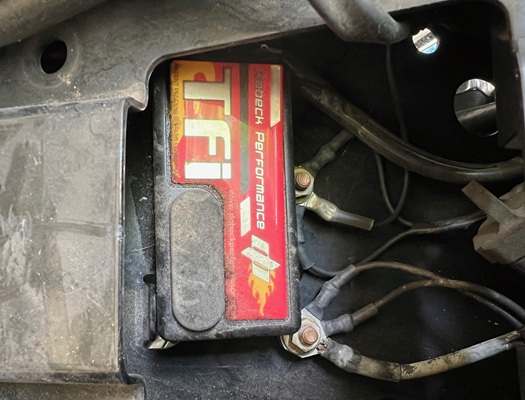
By adjusting the pulse sent to the fuel injectors at different RPM's, a fuel controller increases throttle response and boosts performance. And there's a nice side effect on Twin Cam Harleys--it richens the fuel mixture when idling, allowing the engine to run cooler.
Checking Cam Chain Tensioners
If you're looking to buy a First-Gen Twin Cam bike, you'll hear and read a lot about the cam chain tensioners.
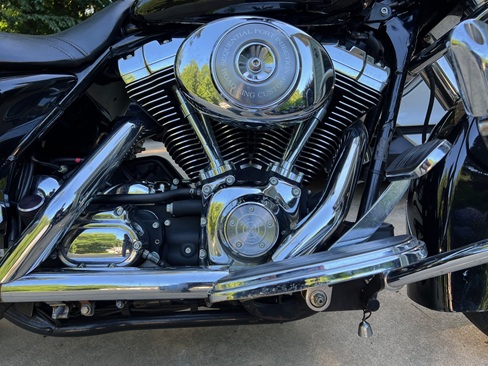
Some of them, not all of them, wear out prematurely (before 50k), and could cause serious damage to the engine if they break apart.
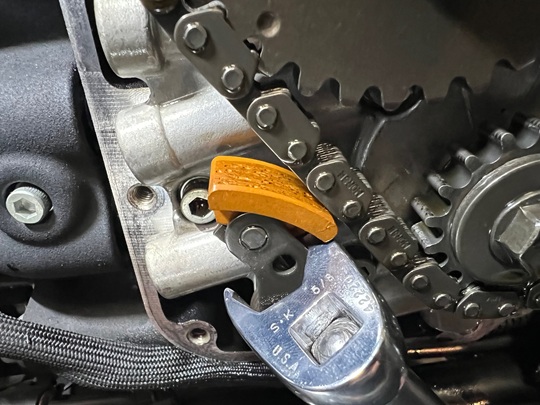
Checking the tensioners requires removing the floorboard, exhaust and cam cover.
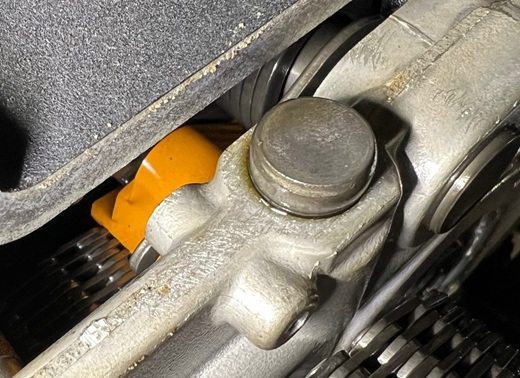
Read: How To Check Harley Twin Cam Chain Tensioners
*******************
Drivetrain
Transmission is a 5-speed with belt drive.
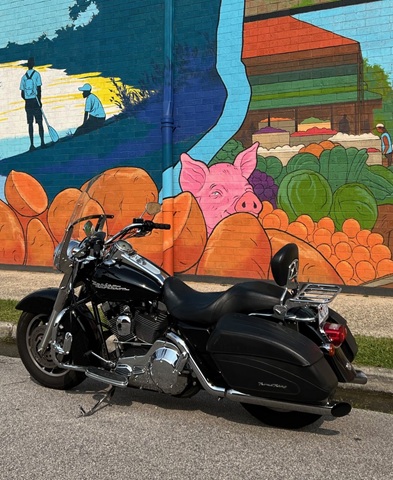
Even with 43k on the clock, the bike shifts as it should (with a pronounced 'clunk') and neutral is always easy to find.
Five vs Six Speed Gearbox
The Harley 5-speed gearbox is very durable unit, and will do everything you ask of it.
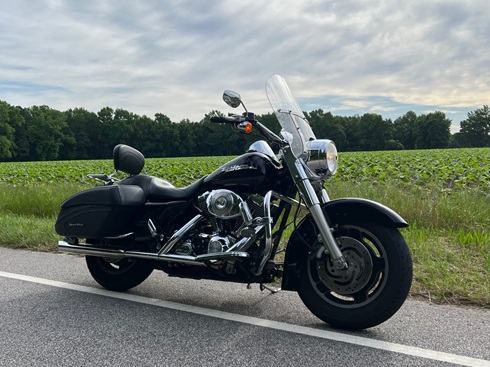
Starting in 2007, a 6-speed transmission became standard on Harley touring models. Although it offered better fuel economy and a quieter ride at highway speeds, the advantages aren't really seen under 70 MPH. And many riders complain that they lug too much in top gear while riding below 70.
*******************
2005 Road King Stats
Overall length: 94 inches - two inches shy of eight feet.
Wheelbase: 63.5 inches
Weight: 750 pounds
Seat height: 27 inches
Brakes
Front: Dual Disc
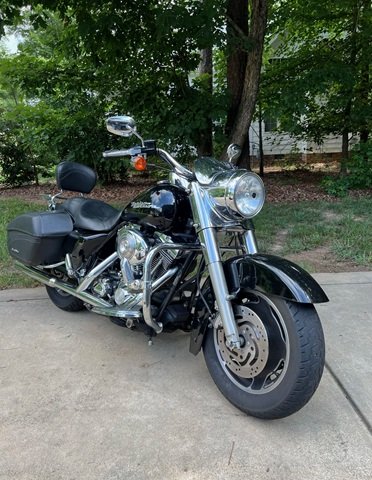
Rear: Single Disc
*******************
Service Manual
The first 'accessory' I bought was a second-hand factory service manual off ebay.
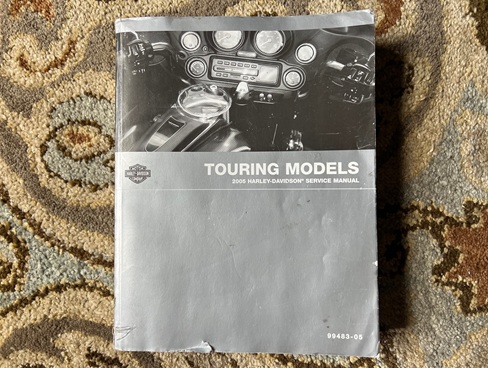
The best way to make sure your next ride will be trouble-free is to perform motorcycle maintenance at the recommended intervals.
According to the FSM, engine oil and filter, primary chaincase oil, and transmission fluid should all be changed initially at 1,000 miles and then at every 5,000 miles thereafter.
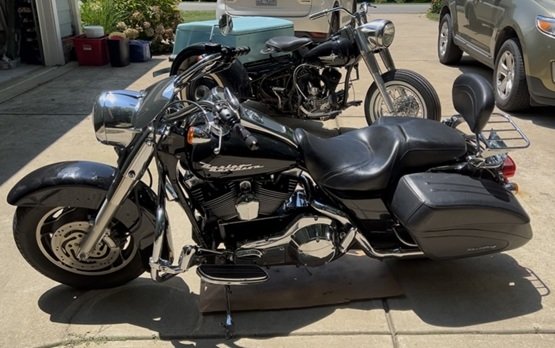
Read: DIY 3 Hole Oil Change
It is also recommended to remove and clean or replace the air filter at these intervals as well.
*******************
Conclusion
Timeless design, long-distance touring capability, and classic Harley style; regardless of how old you are, the Road King is a great ride.
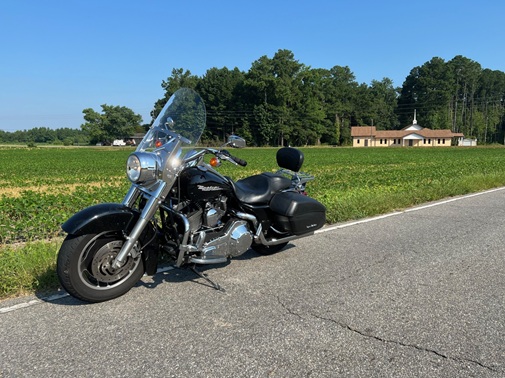
It's equally at ease on short local rides or long road trips.
Family Resemblance
I didn't really notice the similarity until I parked it next to my 1961 Servi-Car.
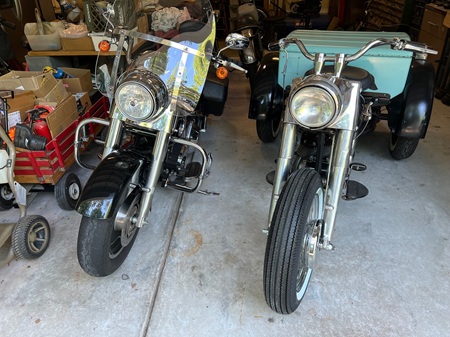
Although there's a difference of 44 years, the gas tanks, front forks, and headlamp nacelles are nearly identical.
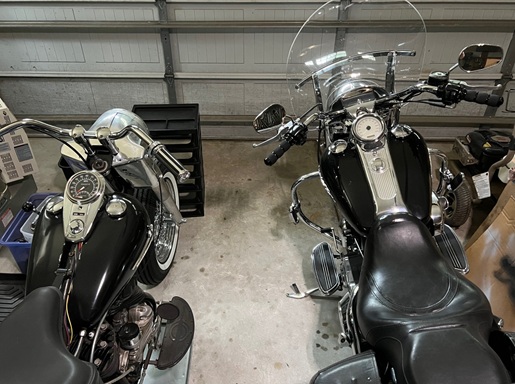
*******************
Related Articles:
Road King Handlebar Adjustment
Remove and Install Primary Cover Harley Twin-Cam
Sunday Morning Motorcycle Ride
Motorcycle Gear For Senior Riders
AGM Motorcycle Battery Review
The only things I carry in my saddlebags are a few tools wrapped in a towel, a block of wood, and a Noco GB40 battery jump pack. The charge holds for months, and the USB ports are a bonus for charging devices in emergencies.
